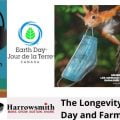Nature awakens in spring and there’s plenty of opportunity to get photos of flowers, mosses, buds
on trees, insects and, of course, baby animals. Here are some tips for getting frame-worthy shots.
- It goes without saying that you should get to know your equipment and how to use it effectively.
- Be mindful of the light and the time of day when taking photos. Early morning and late afternoon are typically the best times for nature photography, as the light is softer and more diffuse.
- Pay attention to the background and foreground of your photos. Make sure that there is a good
balance between the subject and the surrounding environment. - Try to capture movement or action in your photos, such as a bird in flight or a waterfall cascading down.
- Experiment with different angles and perspectives to add interest to your photos.
- Take advantage of natural frames, such as tree branches or rocks, to focus the viewer’s attention on
the subject. - Look for patterns, textures, and colours in the natural world to add visual interest to your photos.
- Give them space, be patient, and blend in Waiting for the right moment.
- And most of all, remember that you are a visitor in nature’s home. Do not disturb fox dens, bird nests,
rabbit burrows or any of nature’s creations.
Have great nature shots to share?
Tag us in your photos @harrowsmithmag.














